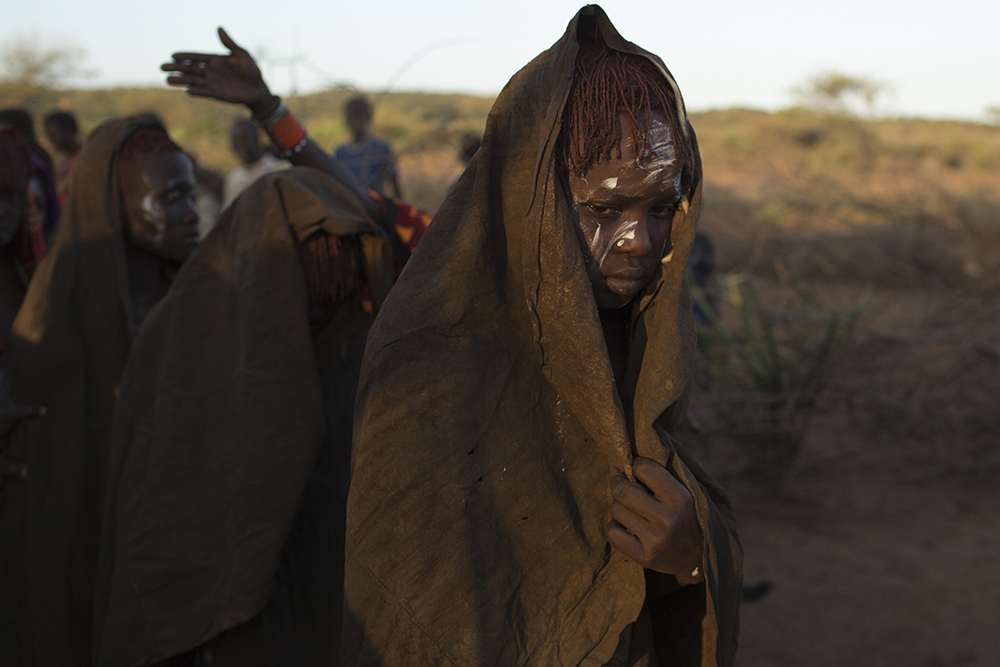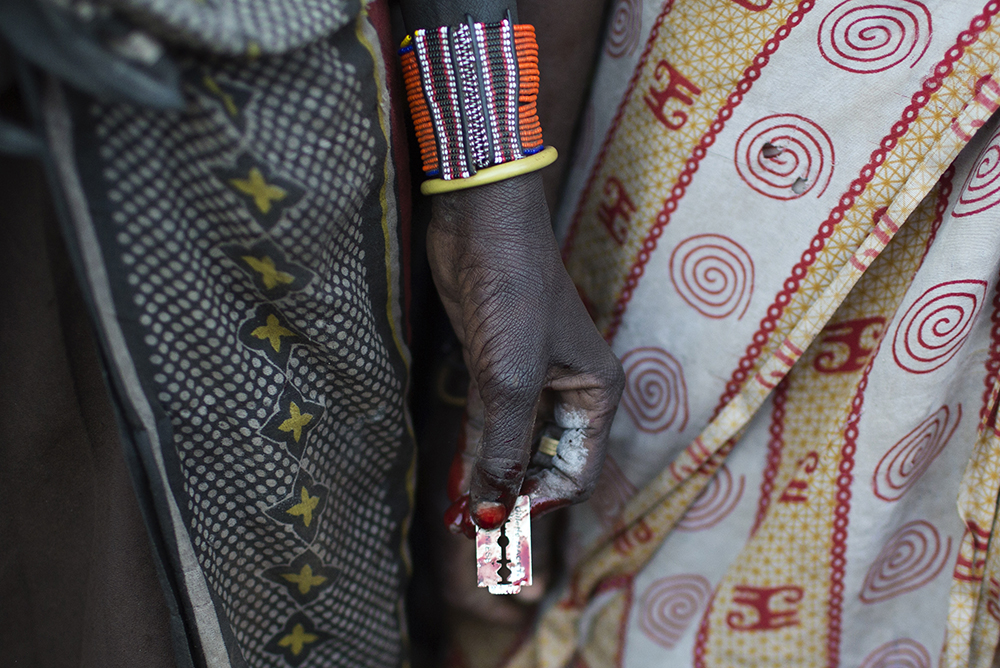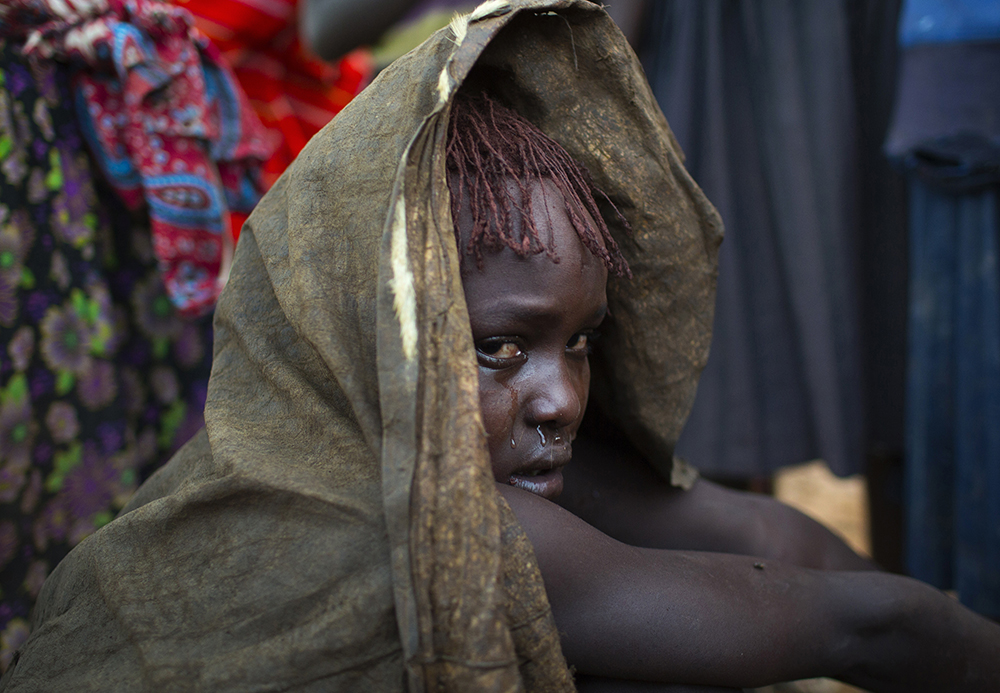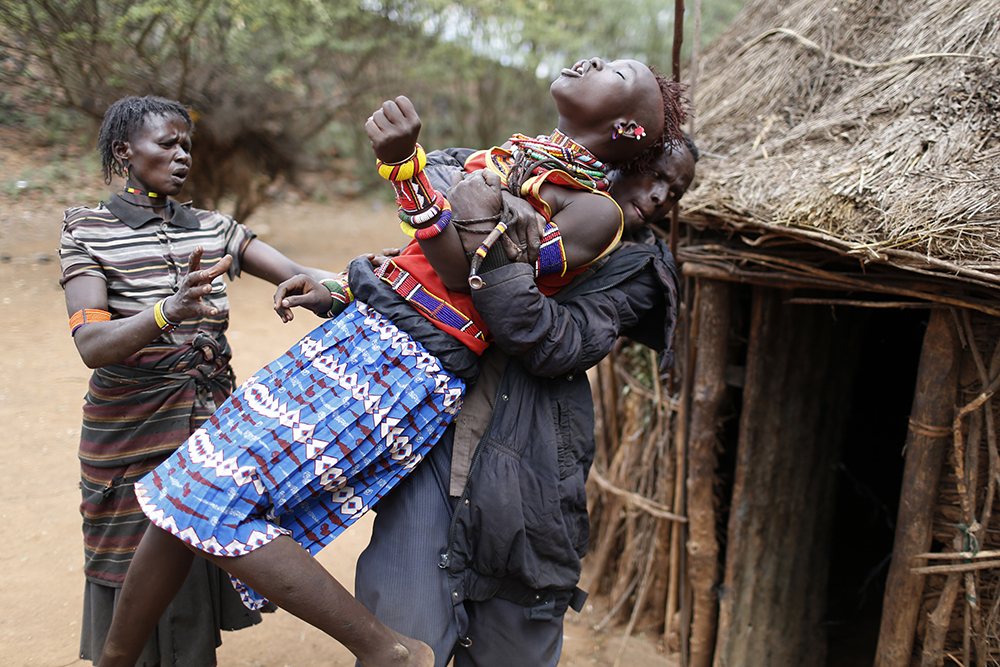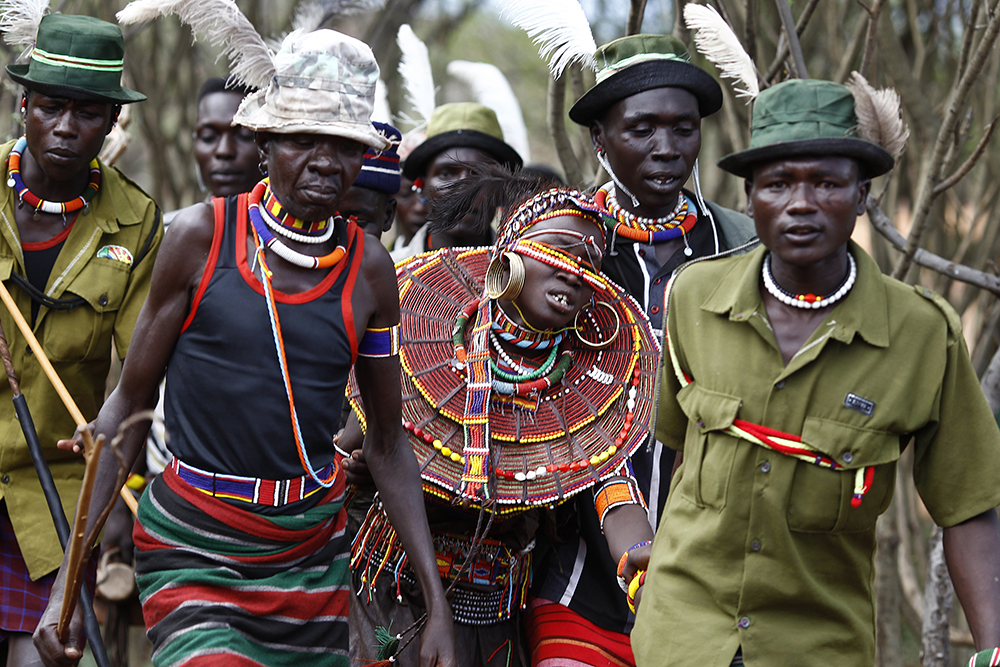Circumcision and forced marriage among Kenya’s Pokots
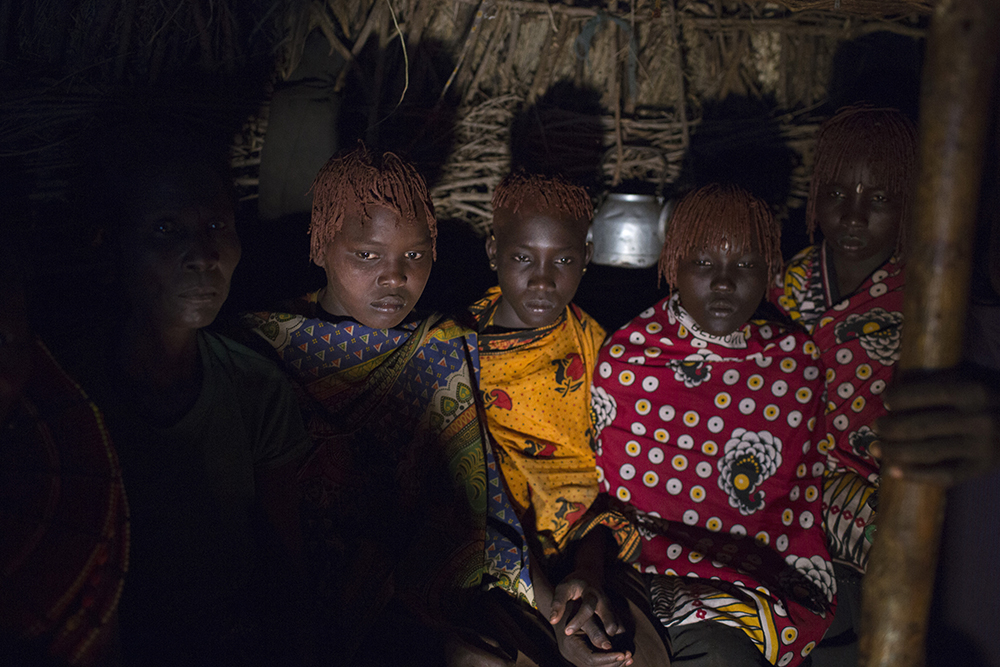
-
PhotographerSiegfried Modola
Draped in animal skin and covered in white paint, four teenage girls squat over large stones in a remote western Kenyan village after being circumcised - a life-threatening custom banned in the country three years ago. Like the four neighbours, over a quarter of Kenyan women have undergone the ordeal, seen as a rite of passage for girls despite government efforts to end it in the East African country. "It's a tradition that has been happening forever," the father of one of the girls, who asked not to be named, fearing reprisal from the authorities, explained from the isolated Pokot settlement some 80km from the nearest town of Marigat. "The girls are circumcised to get married. It's a girl's transition into womanhood," he said. Wrapped in bright-coloured shawls, the girls spent the night huddled around a fire in a thatched-roof house as local women gathered to sing and dance in support. At its most extreme, circumcision, also known as female genital mutilation, involves cutting off the clitoris and external genitalia, then stitching the vagina to reduce a woman's sexual desire. Practitioners use anything from razor blades to broken glass and scissors. Circumcision is heavily practiced among the Pokot, and one of the girls' mothers believes it is a sign of strength. "The pain will make her strong. She can show the rest of the community that she can endure it," the woman said after having her daughter circumcised by a Pokot elder donning a beaded neck collar and large brass earrings. "I'm proud of my daughter for doing this," she said. As the century old Pokot tradition states, the girls are kept out of sight of the men in the community for about a month. This period will allow their wounds to heal, at which time they will be ready to be married. In an image through out the end of the story, a family member holds one of the adolescent girl as she tries to escape a forced marriage, unaware of the arrangement her father has made of giving her as wife to a much older man. Many families refrain from telling their daughters their plans, worried they may run away from home. According to customs, the girl’s future husband arrived at the girl’s family home accompanied by a group of men after having paid, during the period of several months, a dowry in livestock. The men wait for the family of the girls to dress her in traditional clothes and beads, before taking her away to her new home and life.
